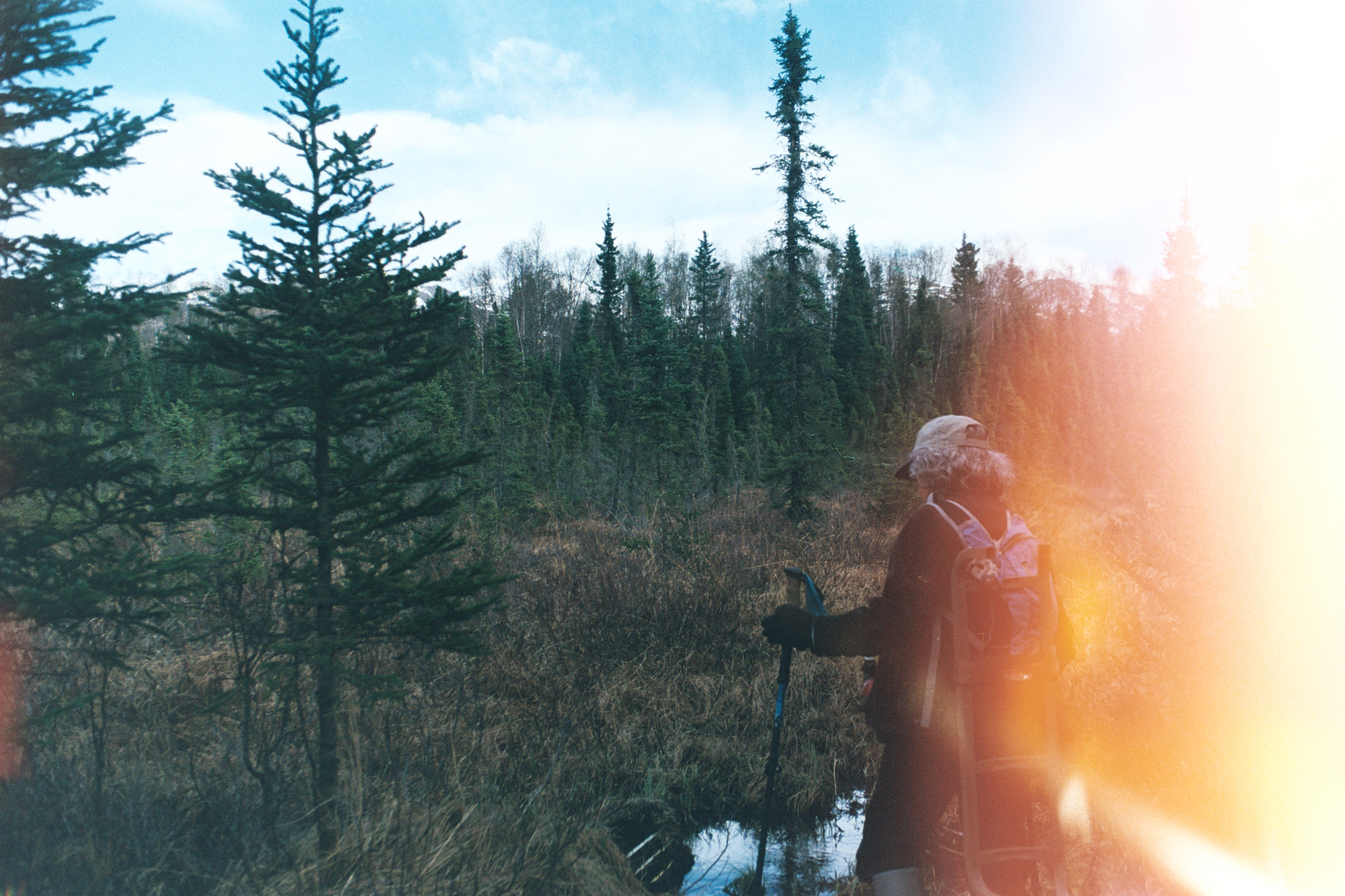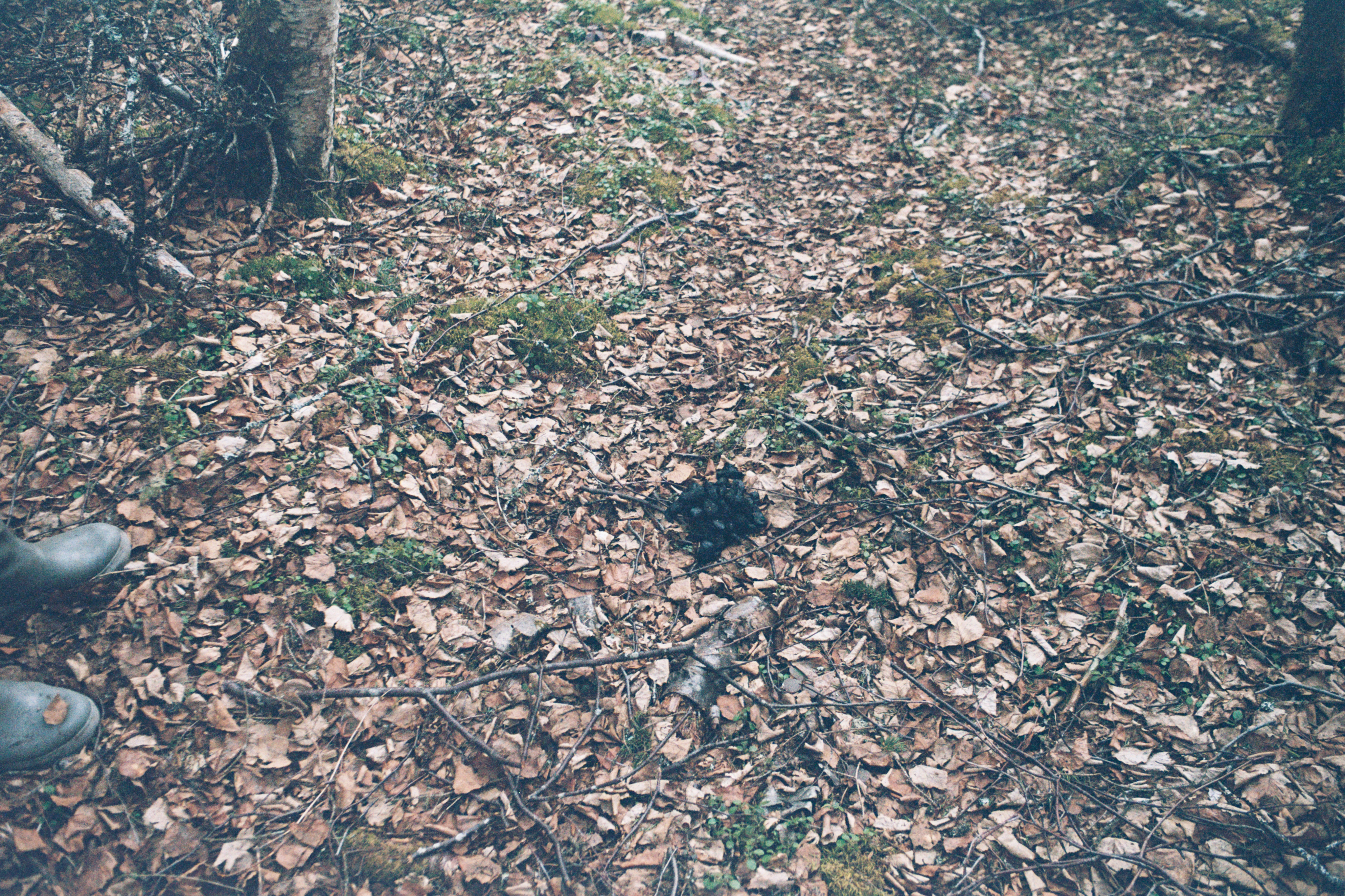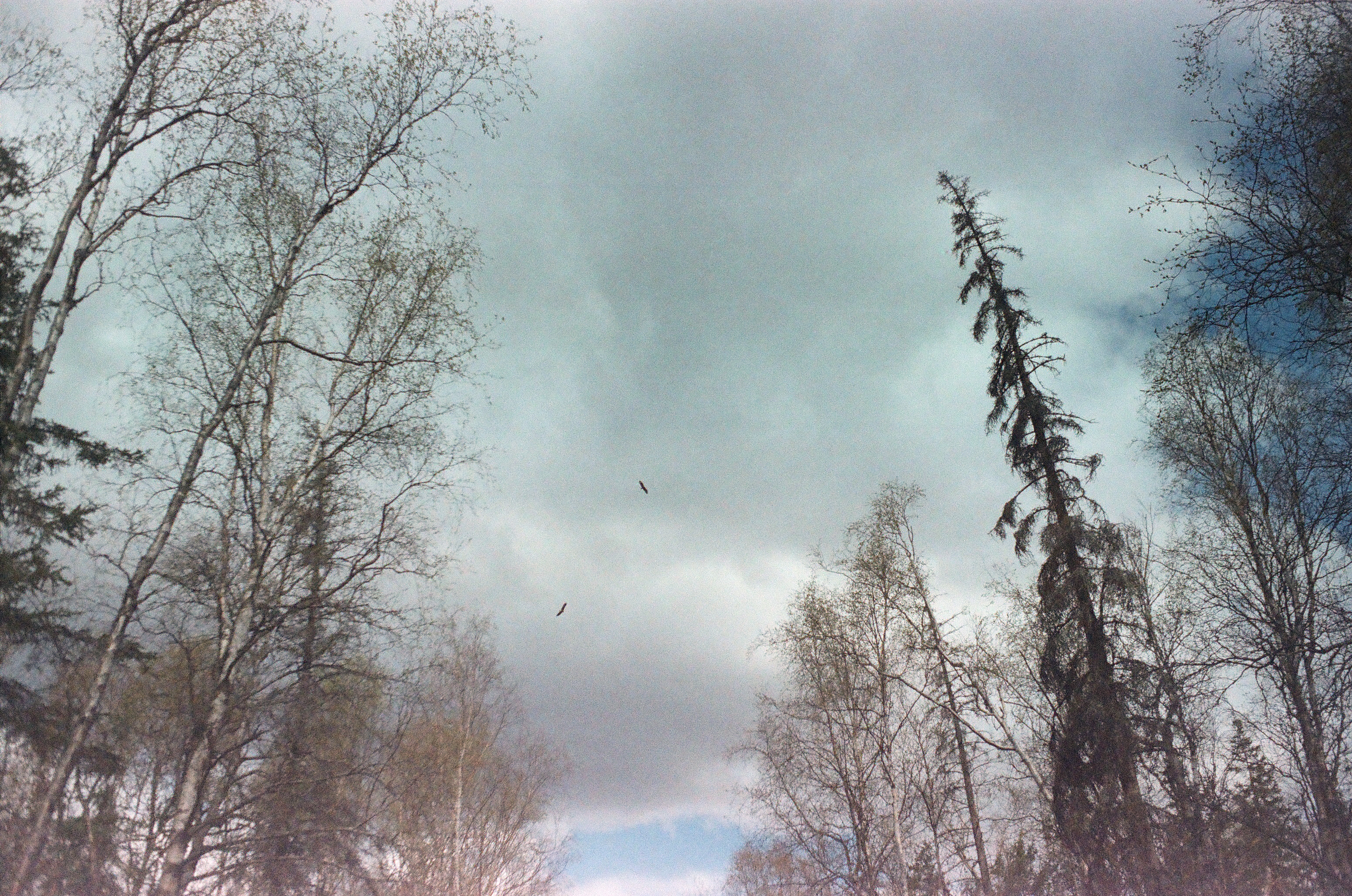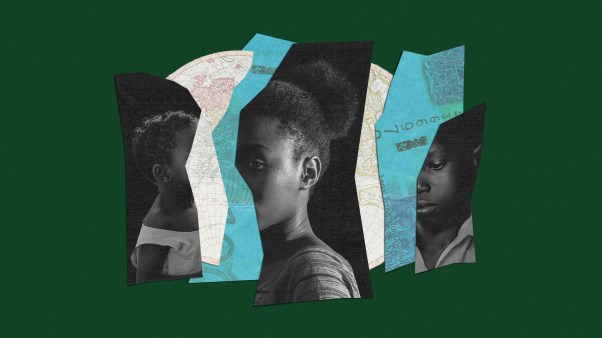Donna Gail Shaw is up a tree, her holstered .44 revolver sometimes grazing the bark as she adjusts a game camera and describes the time she almost got between a bear and its cub.
“It was the biggest brown bear I’d ever seen in my life. And she kept coming toward me. And I thought, ‘This is not good,’ because I’m yelling and talking to her and she’s … coming toward me. She keeps looking this way. And I look that way too, and then I look at her and I thought, ‘I’ve got to get out of here.’”
For the better part of ten years, Shaw, a retired science-education professor, has made weekly hikes near her home to check each of the game cameras she maintains on the outskirts of Anchorage, Alaska. During summer, they number half a dozen or more.
As the lifelong Southern Baptist tells it, the hikes to and from her trail cameras—and the footage of wildlife she retrieves from the memory cards, then shares online with a growing audience—all sprang from simple curiosity. One day, on a hike, she met a man who maintained some game cameras that caught interesting footage of animals. When she got tired of pestering him to share his latest videos, she set up her own.
Several years later, Shaw’s work has acquired a following that’s gained increasing media coverage. But though some of the articles note her habit of singing hymns as a way to alert bears to her presence, the pieces are mostly framed as nature stories. They don’t consider the spiritual implications—how Shaw’s work obeys Jesus’ call to consider creation or how it might entail a practice akin to prayer.
Each game camera is slightly larger than a standard copy of the Book of Common Prayer—or a Lunchables snack kit. Depending on the location, Shaw might use moss or other greenery to camouflage them—more to hide the equipment from people than to hide it from animals.
Due to an unusually dry winter, we contended with few mosquitos the day Shaw took me out. Much of her route goes over winter mushing trails for dog-sled teams—trails which become a swamp of boot-sucking mud in summer.
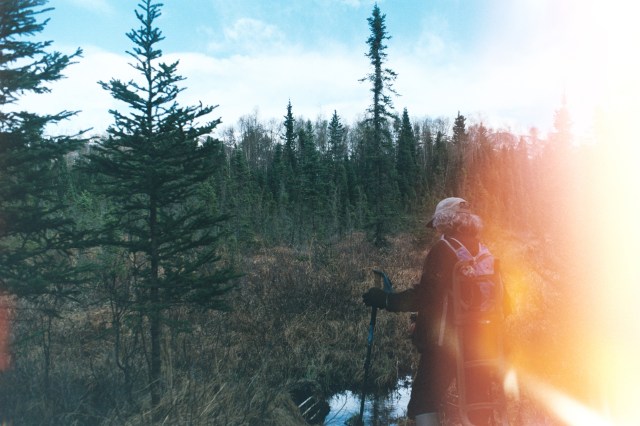 Photography by Anna Broadway
Photography by Anna BroadwayThis year, the swamp trail still had good visibility in early May, when Shaw set out to install more of her seasonal cameras. (She keeps only two, dubbed her “bunny cams,” up year-round. The name comes from the snowshoe hares whose pellets alerted her to the location’s filming potential.) Due to a few light snows in April, Shaw delayed our journey until the ground was fully thawed for Alaska’s short summer season. By the time she deemed the area ready to hike, the birch trees had sprouted a fresh coat of green, but little more than dead yellow grasses emerged from the mud, into which we sometimes sank ankle deep.
To check existing cameras and install new ones, Shaw wore a pair of gray Xtratuf shoes, the almost-knee-high boots many Alaskans favor. Later in the summer, Shaw said, the mosquitos get so thick she has to wear a head net. The swamp grasses grow high enough to conceal more wildlife—whether the spruce grouse she had us watch for in some sections or the bears for which she stayed constantly alert.
“Safe, to me, is when I can see around me and I can see in the creek and see if there’s a bear that’s going to kill me,” she explained. This rubric has determined the places where Shaw puts her cameras—particularly those that point at particular trees where bears love to rub.
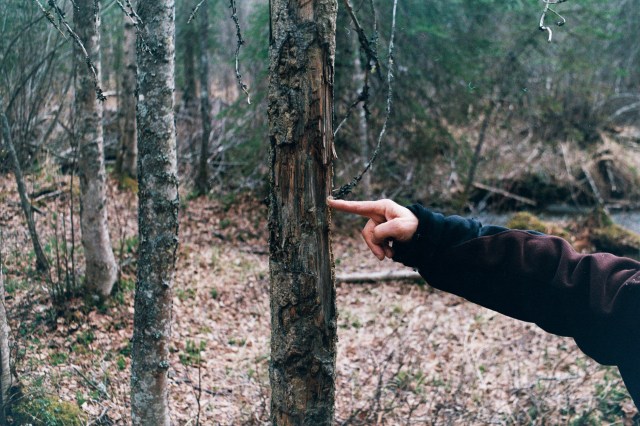 Photography by Anna Broadway
Photography by Anna BroadwayWhen I suggested an opening prayer for our hike and interview, Shaw asked me to cover several specific things she usually asks God for before each of her treks. We should ask for safety, she said, for us and the animals alike. On her own, she also usually prays that if she should fall, God would bring her down gently and she would be able to get up again.
Shaw, 70, suits her prayers to action. In addition to a summertime array of two bear sprays and two air horns, she carries a sleek .44 revolver holstered near her substantial hip pack. She also tells a friend when she goes out, and has her track the journey via Apple’s Find My app.
As Shaw talked, a “girls in science” baseball cap shielded her face from the midafternoon sun. By the summer solstice in June, Anchorage gets almost round-the-clock daylight, but Shaw keeps a pretty consistent schedule and avoids going out too late in the afternoon or too early in the morning. No matter the sun’s position, bear activity near the creek where she trains some cameras becomes increasingly likely around 4 or 5 p.m. During the month of July, Shaw never hikes alone, because too many salmon are in the creek, prompting “high bear activity.” She said, “I’ve just learned from experience that I have too many bear encounters in July.” Bearing out her caution, a 67-year-old woman hiking alone was mauled by a bear earlier this week, in a “heavily wooded” area just a few miles from where Shaw keeps her cameras.
As a child in rural East Texas, Shaw grew up in a family that regularly hunted. But an early misadventure shooting a bird with a BB gun “broke my heart,” she said. “Now I like to hunt the cameras.”
Earlier on, Shaw checked the cameras as often as three times a week. “That slowed down after I had too many bear encounters.” Now she goes closer to once a week, often hiking Sundays after church. Perhaps that has something to do with the hymns. She landed on those after pondering how to make noise on her usually solitary hikes.
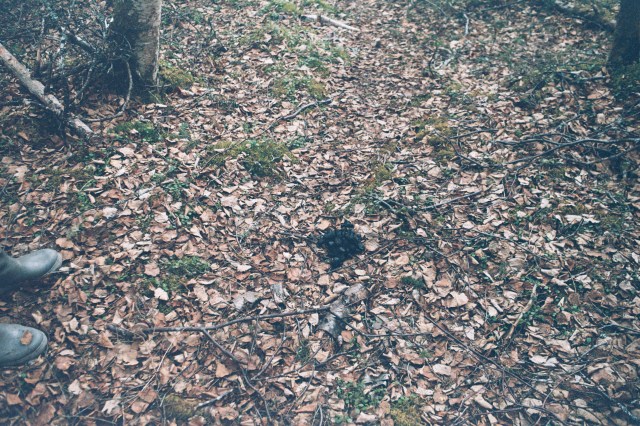 Photography by Anna Broadway
Photography by Anna BroadwayOnce she started, she said, “I enjoyed it so much that I would add a new hymn every year.” This year she’s learning “Because He Lives.”
“It was part of my upbringing … and I miss it,” Shaw said of the hymns. “I also like the message God gives me through the hymns, even though I might be singing the same hymns over and over. Maybe he speaks to me differently each time.” When Shaw runs out of verses, she prays out loud, including for some of the people in her hiking groups.
Before visiting the camera sites with her, I had wondered how Shaw’s video practice shapes how she relates with God. But she didn’t explicitly articulate those connections when I asked her about them. Some of the theologians I followed up with after our hike said she doesn’t need to.
“It’s part of our … Western Christianity to have to be able to put explanatory words” to what Shaw’s doing, said Danny Zacharias, an associate dean at Acadia Divinity College and adjunct professor for the North American Institute for Indigenous Theological Studies. The “natural integration of her life,” he observed, “sound[s] a lot like Indigenous ways of being and knowing.”
Randy Woodley, an emeritus professor at Portland Seminary and author of books including Becoming Rooted, agreed. “This is the most natural thing in the world for [Shaw] to be doing,” he said. “She’s … showing us the rivers and the salmon, the grasses and the wind. And this is the domain that we’re supposed to be taking care of.”
“When we say that, as Christians, God loves the world, we’re almost always thinking human beings,” Zacharias said. “Indigenous Christians, when we say, ‘God loves the world,’ we mean God literally loves the leaves and the trees and the weeds and the waters. And when we think of Jesus as being the Savior of the world, we think of that inclusive, all-encompassing way as well.”
Walking with Shaw, I was struck by how much of the earth remains uninhabited—a fact especially brought home by Alaska’s vast stretches of mountains and tundra. Thanks largely to fieldwork for my recent book, I’ve visited 50-some countries. But that focus on mostly urban centers leaves out how much of the earth is mainly traversed by air, sea, and land creatures like those Shaw trains her cameras on.
“The Bible gives us plenty of stories to show us that we not only can encounter God in creation; we encounter God through creation,” Zacharias said. He cited examples like the burning bush (Ex. 3), a rumbling mountain, wind, and “Jesus comparing himself to water.”
According to 1 Kings, attention to God’s work in creation strongly influenced none other than Solomon and his wisdom:
He spoke three thousand proverbs and his songs numbered a thousand and five. He spoke about plant life, from the cedar of Lebanon to the hyssop that grows out of walls. He also spoke about animals and birds, reptiles and fish. From all nations people came to listen to Solomon’s wisdom, sent by all the kings of the world, who had heard of his wisdom (4:32–34).
Perhaps the Bible includes Solomon’s proverbs but not his botanical or biological studies because we each need to consider creation anew, to study it for ourselves. “Wisdom, fear, awe, joy—all of these things we need in life—we learn those from creation,” Woodley said. “The wolves don’t kill more than what they need to eat. Bears don’t unless they’re rabid. … I’ve seen hawks in trees with songbirds because they’re not hungry; they’re fine.”
With her trail cameras, Shaw offers a glimpse of animal interactions—from the playfulness of young bears (caught on some of the cards we retrieved that day) to foxes making a meal of moose. “Life’s not all rainbows and butterflies, and nature’s not that, and those are some of the things we can learn,” Woodley said. But if, like Solomon, we would do better to emulate Shaw’s attention than to just watch her videos, Woodley and Zacharias offered some other ideas.
During his master’s program, Woodley said he used to walk around a cemetery near Valley Forge in Pennsylvania to “see nature, smell the leaves after rain. … If you don’t have a yard to do that in, drive ten miles,” he said. “There’s a lot going on.” Zacharias suggested both “intellectual research” like learning where your water and food come from and choices about your living space. “Even in really urban spaces, we can intentionally be growers,” he said. “It’s good to have greenery around you, something that you need to have responsibility for and that you receive something back from.”
In these weeks after my hike with Shaw, I’ve been struck by how often my view of God’s character hinges on his recent responses (or perceived lack thereof) to my prayers or the human affairs that worry me. I’ve wondered: Is my pessimism because I don’t spend enough time in those woods? Is it because I don’t sufficiently study all the ways God continues to faithfully sustain the lives of billions of creatures he knows so well that he notes even each bird that dies?
 Photography by Anna Broadway
Photography by Anna BroadwayMortality came up frequently in my time with Shaw—whether the ever-present risk of a fatal bear encounter or the evidence of various tree and animal deaths. But even as Shaw faces some increased limits as she ages, she said the hikes continue to energize her. Recently, she’d been cleaning out a duplex she has decided to sell—a task that left her weary. “But when I finish there, I put on my hiking clothes and I come out here, and the exhaustion goes away,” she said.
Perhaps that rejuvenation owes itself to what one of the hymns she referenced that day describes.
And he walks with me,
And he talks with me,
And he tells me I am his own;
And the joy we share as we tarry there
None other has ever known.
Anna Broadway is the author of Solo Planet: How Singles Help the Church Recover Our Calling and Sexless in the City: A Memoir of Reluctant Chastity.










